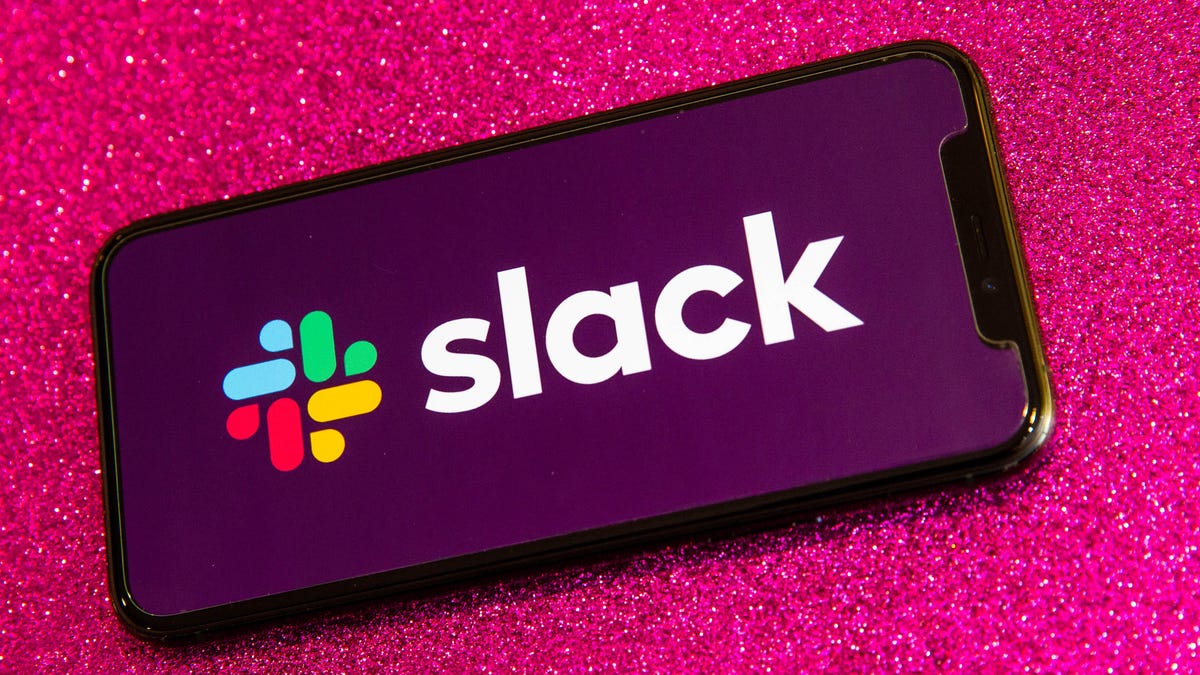Change Your Slack Notification Sound to 'Hummus' Because Why Not?
You can observe International Hummus Day on Friday by replacing Slack's default "knock brush" sound with something much tastier.

If you've ever used the workplace messaging app Slack, you've heard the sound: "ssssscrape, knock-knock-knock." Slack actually provides 11 other notification sound options, which most people probably don't know about. The catalog of sounds ranges from a playful "boing" to a whimsical "ta-da" to a snappy "yoink." And the options aren't limited to onomatopoeias. At the bottom of the menu, you'll notice an option that stands out among the rest: "hummus."
Yup -- it's a matter-of-fact British voice saying the word hummus. Reportedly it's an inside joke dating back years, when then-Slack executive Anna Pickard's coworkers got a kick out of the way she pronounced it. You, too, can get a kick out of that pronunciation by changing your notification sound in your Slack settings. And what better time to do it than in observance of International Hummus Day, which falls on May 13.
Corporate workers send more than 1.5 billion Slack messages every month through the business communication software, according to TechJury. Imagine the overall increase in whimsy if everyone switched to "hummus" instead of the dreaded knock brush. Sure, the default sound alone is relatively pleasant and unimposing. But when it's repeatedly accompanied by a note urging you to "circle back" or "touch base" or "ping me ASAP," your brain might pull a Pavlov and start associating the innocuous sound with corporate buzzword-fueled dread. Switching to "hummus" (or any of Slack's other notification sound options) won't stop your boss from pinging you about "promoting synergy" and "hitting the ground running," but they might at least help you stop hearing the knock brush in your nightmares.
Whether you prefer to be pinged via the name of a chickpea spread, a more traditional alert sound or no sound whatsoever, there's a simple way to change it in Slack.
How to change your Slack notification sound settings
On a desktop
1. Open the Slack app.
2. Click your profile picture in the top right corner.
3. Hit Preferences. (Alternatively, you can just take a shortcut to your preferences by holding two keys. On a PC, it's CTRL + comma. On a Mac, it's Command + comma.)
4. When you enter your preferences, you'll land on the notifications tab by default.
5. Scroll a bit until you get to the Sound & appearance section.
6. Hit the drop-down menu under Notification sound (messages).
7. Click each sound, and it'll play a sample. If you don't want a notification sound, click none.
8. Exit preferences – no need to save – and your new sound setting will go into effect right away.
On an Android device
1. Open the Slack app.
2. On the bottom right corner, tap the you button with the face on it.
3. From the menu, choose Notifications.
4. On the upper half of the screen, choose System options.
5. Choose Sound. Depending on your OS, you might have to choose Advanced first.
6. Pick a sound and be sure to hit Save.
On an iPhone
1. Open the Slack app.
2. On the bottom right corner, tap the you button with the face on it.
3. From the menu, choose Notifications.
4. Choose Sound.
5. Pick a sound.
If you're looking for other ways to use Slack more efficiently, here's how to schedule Slack messages in advance. Check out our guide to Slack Huddles, an audio chat feature that aims to recreate casual office conversation. We also break down Slack Connect, which you can use to chat with people outside of your organization.

